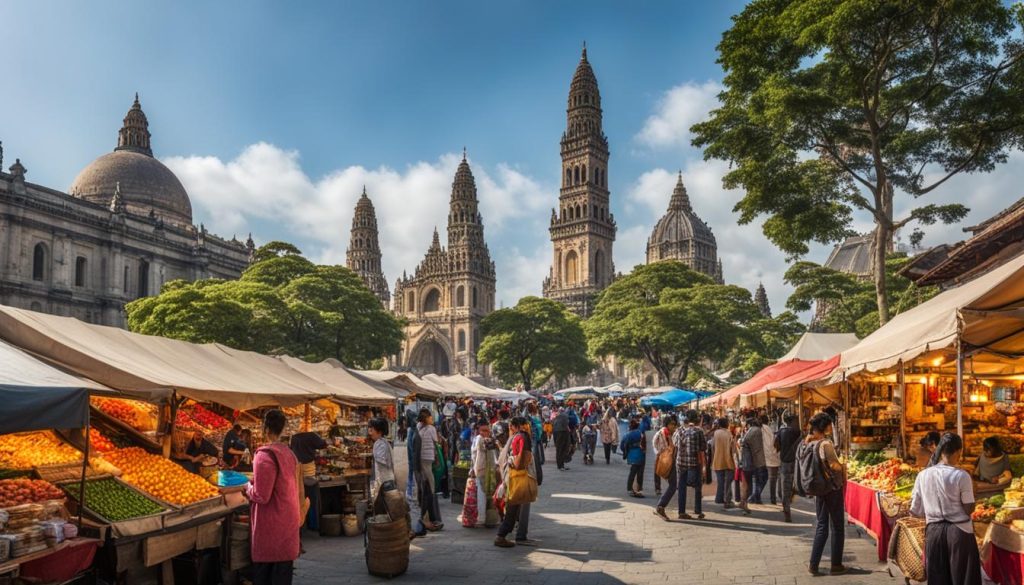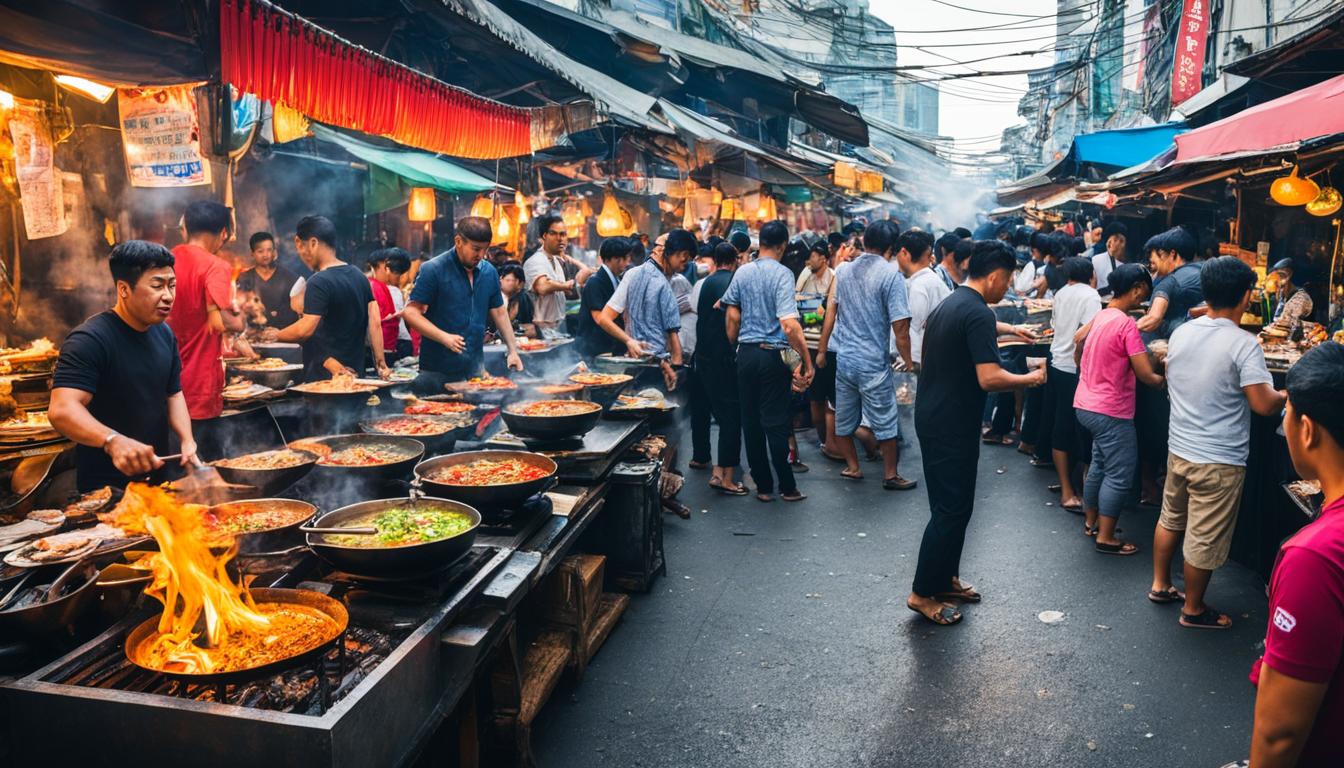Welcome to a delectable journey that tantalizes your taste buds and takes you on a culinary adventure across continents. Culinary travel is not just about exploring new destinations; it is about immersing yourself in the local cuisine, savoring traditional dishes, and discovering the unique flavors and ingredients that define each region. From foodie capitals to hidden gems, gastronomic tours offer a gateway to the heart and soul of a destination’s culture.
Embarking on a culinary travel experience allows you to delve into the vibrant world of local cuisine, where you can sample authentic dishes, learn cooking techniques from local chefs, and connect with the rich culinary heritage of a place. Whether you’re strolling through bustling street food markets, dining at renowned local restaurants, or participating in hands-on cooking classes, every bite is an opportunity to explore the flavors, traditions, and stories behind a region’s culinary customs. The joy of culinary travel lies not only in the tantalizing flavors you encounter but also in the connections you forge and the memories you create along the way.
Key Takeaways:
- Embark on a culinary adventure to experience the world’s diverse flavors and culinary traditions.
- Immerse yourself in the local food scene to gain insights into the history and traditions of a place.
- Try authentic local cuisine, from street food delicacies to home-cooked meals, to understand a destination’s unique flavors and ingredients.
- Learn cooking techniques and recipes from local chefs, expanding your culinary skills and knowledge.
- Create lasting memories by documenting your culinary travel experiences through photography, journaling, or a travel blog.
What is Culinary Travel?
Culinary travel, also known as food tourism, is an enriching practice that allows individuals to explore different cultures and cuisines around the world. It goes beyond traditional sightseeing and offers a unique opportunity to experience a destination through its local flavors, ingredients, and culinary traditions.
When embarking on a culinary travel adventure, one can expect to sample authentic dishes, learn cooking techniques and recipes, and expand their palate by trying new and exciting flavors. It is a journey of discovery, where food becomes a gateway to understanding the history, traditions, and way of life of a particular region.
Exploring Different Cultures Through Cuisine
Culinary travel provides a remarkable avenue to explore and immerse oneself in the diverse cultures of the world. Each region’s cuisine reflects its unique history, geography, and cultural influences. By savoring local dishes and delicacies, one can gain a deeper understanding of the traditions, customs, and values that shape a destination.
Through food, you can travel thousands of miles and experience the vibrant street food markets of Asia, indulge in the rich culinary traditions of Europe, or discover the fusion of cultural influences in North America. South America, Africa, and Oceania are also culinary havens, offering vibrant ingredients, bold flavors, and indigenous foods that truly embody their respective regions.
Learning Cooking Techniques and Recipes
A significant aspect of culinary travel is the opportunity to learn cooking techniques and recipes from local chefs. Participating in cooking classes, workshops, or food tours allows travelers to gain hands-on experience and invaluable knowledge. You can explore the secrets of traditional spice blends, master fermentation techniques, or uncover the art of crafting regional specialties.
Learning from local chefs not only enhances your culinary skills but also provides insights into the cultural significance and stories behind each dish. This newfound knowledge can be brought back home, shared with loved ones, and incorporated into your own cooking repertoire, allowing you to recreate the magic of your culinary travels.
Expanding the Palate
One of the most exciting aspects of culinary travel is the opportunity to expand your palate by trying local flavors and ingredients that are unique to each region. From street food stalls to local restaurants, you can indulge in a wide array of dishes that showcase the authentic tastes and textures of a destination.
Whether it’s sampling the spicy and aromatic flavors of Asian cuisine, embracing the richness of European gastronomy, or discovering the bold and exotic ingredients of South America, every culinary adventure offers an opportunity to tantalize your taste buds with something new and different. It’s an adventure that takes your palate on a journey around the world.

Culinary travel is a gateway to a world of flavors, traditions, and experiences. It allows you to explore different cultures, connect with locals, and gain a deeper appreciation for the art of cooking. By embarking on a culinary journey, you not only satisfy your taste buds but also broaden your horizons and create lasting memories that will always be associated with the flavors and aromas of your travels.
The Benefits of Culinary Travel
Culinary travel offers numerous benefits. It allows me to experience different cultures firsthand by immersing myself in the local food scene and trying authentic local cuisine. Through exploring different cultures through food, I can gain insights into the traditions, customs, and way of life of a destination. Trying authentic local cuisine also allows me to expand my culinary horizons and taste new flavors and ingredients.
One of the most valuable aspects of culinary travel is the opportunity to learn cooking techniques and recipes from local chefs. By participating in cooking classes or food tours, I can gain valuable insights and techniques that I can apply in my own kitchen. It’s incredible to learn from skilled chefs who have honed their craft with generations-old recipes and secrets.
But the benefits of culinary travel go beyond just the taste of the food. It offers a deeper understanding of the culture and traditions of a destination. When I sit down to a meal, I am not just nourishing my body, but I am also nourishing my mind and soul with the stories and history behind each dish. I learn about the local ingredients and culinary customs that make each cuisine unique.
Culinary travel allows me to experience the essence of a destination, to connect with its people through the universal language of food. It’s a journey of personal growth and enrichment as I broaden my culinary skills, expand my palate, and embrace the beauty of different cultures. I believe that cooking and eating can truly foster connections and understanding among people from all walks of life.
So the next time you embark on a journey, I encourage you to not only visit the famous landmarks but also venture into the local markets, street food stalls, and family-run eateries. Try the flavors of the world, and with each bite, you’ll experience the richness of different cultures, try authentic local cuisine, learn cooking techniques and recipes, and create lifelong memories.

Try Authentic Local Cuisine
When embarking on a culinary travel adventure, one of the highlights is trying authentic local cuisine. By experiencing the local flavors, you can immerse yourself in the culture and traditions of the destination. Here are a few tips to make the most of trying authentic local cuisine:
- Sample Traditional Dishes: When trying authentic local cuisine, sample the unique traditional dishes of the region. These dishes have centuries-old recipes passed down through generations and showcase the local ingredients and cooking techniques.
- Explore Street Food Stalls: Delve into the vibrant food scene by exploring street food stalls. These casual eateries offer a taste of the local favorites and are a great way to interact with the locals while enjoying delicious and affordable treats.
- Visit Local Restaurants: To truly experience authentic local cuisine, dine at popular local restaurants. These restaurants use fresh, seasonal ingredients and offer a diverse range of dishes that highlight the region’s culinary specialties.
- Engage with Local Chefs: Interact with local chefs and food producers to gain insights into traditional cooking techniques, secret ingredients, and the stories behind the dishes. This interaction enhances your understanding of the culture and culinary heritage of the destination.
- Embrace New Flavors: Be open-minded and willing to try new flavors and ingredients. Authentic local cuisine often incorporates unique spices, herbs, and ingredients that may be unfamiliar, but offer a memorable dining experience.
By following these tips and embracing the culinary treasures of your destination, you’ll truly savor the essence of the local culture and create unforgettable memories.
A Culinary Exploration of Continents
As I embark on my culinary adventures around the world, I am constantly amazed by the unique and tantalizing array of flavors that each region offers. Asia’s spices and fermentation techniques bring depth and complexity to their dishes, while Europe’s rich culinary traditions and regional specialties are a testament to centuries of culinary excellence. North America, with its fusion of cultural influences, presents a melting pot of flavors and culinary innovation.
In South America, vibrant ingredients are combined with bold flavors to create dishes that are a feast for the senses. Africa’s diverse techniques and ingredients showcase the continent’s rich culinary heritage. And Oceania, with its indigenous foods and oceanic delights, offers a unique blend of flavors that celebrate the bounty of the land and sea.
To truly make the most of my culinary travel experiences, I make it a point to immerse myself in local markets, where the vibrant colors and aromas entice me to try new ingredients and flavors. Exploring street food stalls is another must-do, as it allows me to sample authentic local favorites and interact with the locals. And of course, no culinary adventure is complete without engaging with local chefs and food producers, who generously share their knowledge and passion for their craft.
Documenting and preserving my culinary experiences is a way to savor the memories long after I return home. Whether it’s through photography, journaling, or creating a travel blog, I can share my adventures with friends and family, inspiring them to embark on their own gastronomic journeys. By sharing recipes and cooking techniques, organizing food events or workshops, or simply writing about my culinary adventures, I can spread the love for global flavors and inspire others to explore the world of culinary travel.
FAQ
What is culinary travel?
Culinary travel, also known as food tourism, is the practice of exploring different cultures and cuisines. It involves experiencing local dishes, learning cooking techniques and recipes, and expanding one’s palate.
What are the benefits of culinary travel?
Culinary travel allows individuals to experience different cultures firsthand by immersing themselves in the local food scene and trying authentic local cuisine. It also provides the opportunity to learn cooking techniques and recipes from local chefs, enhancing culinary skills and knowledge.
How can I make the most of trying authentic local cuisine?
To make the most of trying authentic local cuisine, sample traditional dishes, explore street food stalls, visit local restaurants, and engage with local chefs. Be open-minded and willing to try new flavors and ingredients.
What can I expect to find on a culinary travel adventure?
Culinary travel offers a unique and tantalizing array of flavors from different regions around the world. Each destination has its own culinary specialties and traditions, ranging from spices and fermentation techniques in Asia to rich culinary traditions and regional specialties in Europe, and fusion of cultural influences in North America.
How can I document and share my culinary travel experiences?
You can document and preserve your culinary experiences through photography, journaling, or creating a travel blog. Sharing recipes, organizing food events or workshops, and writing about your adventures can inspire others and spread the love for global flavors.




